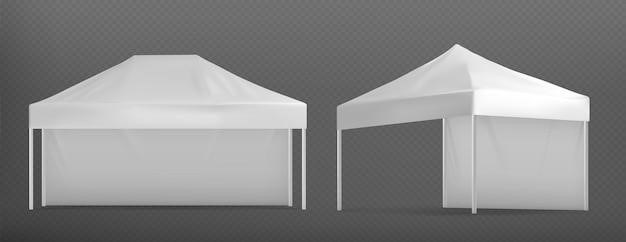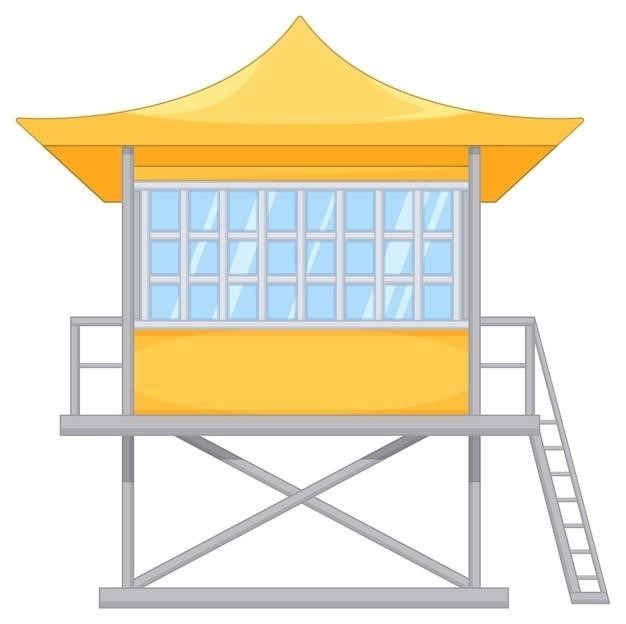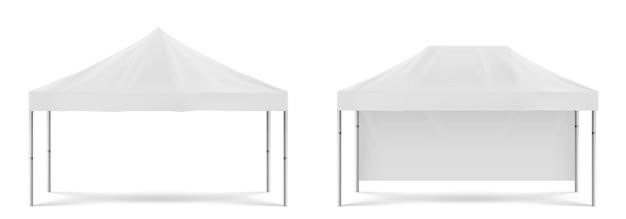10×20 Canopy Assembly Instructions
This document provides step-by-step instructions on how to assemble a 10×20 canopy. It includes a parts list, tools needed, assembly steps, safety precautions, maintenance and storage tips, troubleshooting advice, and a conclusion. You can find detailed information regarding the assembly of specific models like the Celebration II Decorative Canopy, SuperMAX Canopy, or MAX AP Canopy, along with parts lists and descriptions. Be sure to read all instructions completely before beginning assembly.
Introduction
Welcome to your new 10×20 canopy! This versatile shelter offers shade and protection from the elements, making it perfect for a variety of outdoor activities. Whether you’re planning a backyard barbecue, a camping trip, or a tailgate party, your canopy will provide a comfortable and convenient space for you and your guests. This instruction manual will guide you through the assembly process, ensuring that you have a safe and enjoyable experience with your canopy.
This manual covers various models, including the Celebration II Decorative Canopy, the SuperMAX Canopy, and the MAX AP Canopy. Each model may have slight variations in assembly steps and parts, so it’s crucial to refer to the specific instructions for your model. Take your time, follow the steps carefully, and don’t hesitate to seek assistance if needed.
Before starting the assembly, gather all the necessary parts and tools. Ensure you have a clear and level area to work on. Remember, assembling a canopy is a team effort, so enlist the help of a friend or family member. By following these simple instructions, you’ll be able to set up your canopy quickly and efficiently, making the most of your outdoor gatherings and events.
Parts List
The specific parts included in your 10×20 canopy kit will vary depending on the model you purchased. However, most 10×20 canopies will include the following essential components⁚
- Frame⁚ This consists of the main support poles, typically made of aluminum or steel, that form the structure of the canopy.
- Rafter Poles⁚ These are shorter poles that connect to the main support poles and provide additional structural support for the canopy cover.
- Canopy Cover⁚ This is the fabric that covers the frame and provides shade and protection from the elements. It’s usually made of durable, water-resistant material.
- Base Feet⁚ These are the feet that attach to the bottom of the support poles, providing stability and anchoring the canopy to the ground.
- Anchors⁚ These are stakes or other anchoring devices used to secure the base feet to the ground.
- Bungee Cords⁚ These are used to connect the rafter poles to the main support poles, ensuring a tight and secure fit.
- Straps⁚ These are used to attach the canopy cover to the frame, ensuring it stays in place during windy conditions.
Some canopy models may include additional parts, such as sidewalls, extension kits, or storage bags. It’s important to review your specific model’s parts list and ensure all components are present before beginning assembly.
Tools Needed
Having the right tools on hand will make assembling your 10×20 canopy much easier and more efficient. Here is a list of tools you’ll likely need⁚
- Screwdriver⁚ You’ll need a screwdriver to tighten any screws or bolts that may be used to connect the canopy’s frame components.
- Wrench⁚ If your canopy uses nuts and bolts for assembly, a wrench will be essential for tightening them securely.
- Hammer⁚ A hammer will be required to drive in the anchors or stakes that secure the canopy to the ground.
- Measuring Tape⁚ A measuring tape will be helpful in verifying the dimensions of the canopy and ensuring all parts are properly positioned.
- Level⁚ Using a level to ensure the canopy is properly leveled will help prevent it from tilting or becoming unstable.
- Work Gloves⁚ These will protect your hands from any sharp edges or rough surfaces on the canopy parts.
- Safety Glasses⁚ Wearing safety glasses will protect your eyes from any debris or flying objects during assembly.
You may also find it helpful to have a pair of pliers, a utility knife, and a marker for marking and cutting any materials needed during assembly.
Assembly Steps
Assembling a 10×20 canopy typically involves several steps, and the specific instructions may vary depending on the brand and model. However, here is a general overview of the assembly process⁚
- Laying Out the Parts⁚ Begin by spreading out all the canopy parts on a flat, level surface. This will help you identify each component and ensure you have everything before you start assembling.
- Assembling the Frame⁚ The frame of the canopy is usually constructed from metal poles that connect together to form a rectangular structure. Follow the manufacturer’s instructions carefully when connecting the poles, making sure to use the provided connectors and tightening them securely.
- Attaching the Canopy Cover⁚ The canopy cover is typically made of a durable fabric that is designed to provide shade and protection. Many covers have elastic straps or ties to attach them to the frame. Carefully stretch the cover over the frame and secure it using the provided straps or ties.
- Securing the Canopy⁚ Once the frame and cover are assembled, you’ll need to secure the canopy to the ground. This may involve using anchors, stakes, or other anchoring systems. Make sure to choose a location that is level and free of any obstacles.
Remember to refer to the specific instructions provided with your canopy model for detailed guidance on each step.
Step 1⁚ Laying Out the Parts
Before you begin assembling your 10×20 canopy, it’s essential to lay out all the parts on a flat, level surface. This step is crucial for several reasons⁚

- Organization⁚ Spreading out the parts helps you visualize the entire assembly process and identify each component, making it easier to follow the instructions.
- Inventory Check⁚ It allows you to ensure you have all the necessary parts before starting the assembly. Missing parts can cause delays and frustration.
- Part Identification⁚ Laying out the parts helps you familiarize yourself with their shapes and sizes, making it easier to distinguish them during assembly.
Take your time with this step, and don’t hesitate to refer to the parts list provided in the instructions. This will ensure a smoother and more efficient assembly experience.
Step 2⁚ Assembling the Frame
The frame is the backbone of your 10×20 canopy, providing the structural support for the canopy cover. Assembling the frame typically involves connecting the leg poles, rafter poles, and frame connectors. Here’s a general guide, though specific instructions might vary depending on your canopy model⁚

- Connect the Leg Poles⁚ Start by connecting the leg poles to the frame connectors. These connectors are usually located at the corners of the canopy. Ensure the connections are secure and properly aligned.
- Attach the Rafter Poles⁚ Once the leg poles are connected, slide the rafter poles into the frame connectors. These poles run lengthwise across the canopy, forming the roof structure. Secure the rafter poles to the frame connectors using the provided hardware.
- Reinforce the Frame⁚ Depending on your canopy model, you might need to add additional support structures, like crossbars or bracing, to strengthen the frame. These components help distribute weight evenly and enhance stability.
Remember to work carefully and ensure all connections are secure. A sturdy frame is essential for a stable and safe canopy.
Step 3⁚ Attaching the Canopy Cover
Once the frame is assembled, it’s time to attach the canopy cover. This is the final step in creating your shade structure. The process might vary slightly depending on your canopy model, but here’s a general guide⁚
- Prepare the Cover⁚ Unfold the canopy cover and lay it out on a flat surface. Make sure the cover is free of wrinkles or creases.
- Align the Cover⁚ Center the cover over the assembled frame, ensuring it’s evenly distributed.
- Secure the Cover⁚ Most canopy covers have straps or bungee cords that attach to the frame. Secure these attachments to the corresponding points on the frame.
- Tighten the Cover⁚ Pull the straps or bungee cords taut to ensure the cover is snugly fitted and doesn’t sag.
- Additional Fasteners⁚ Some canopy models might have additional fasteners, like clips or hooks, to secure the cover to the frame. Follow the specific instructions provided for your canopy model.
Take your time and double-check that the canopy cover is securely attached to the frame. A well-secured cover will ensure proper protection from the elements.
Step 4⁚ Securing the Canopy
The final step in assembling your 10×20 canopy is securing it to the ground. This is crucial for ensuring stability and preventing the canopy from being blown away by wind or toppled over. Here’s how to do it⁚
- Choose a Suitable Location⁚ Select a flat, level surface to set up your canopy. Avoid areas with steep inclines, uneven ground, or proximity to potential hazards like trees or power lines.
- Attach Base Feet (Optional)⁚ Some canopy models come with base feet or foot plates; These are designed to be attached to the legs and provide a wider footprint, increasing stability.
- Use Anchors⁚ Most canopies require anchors to secure them to the ground. These anchors can be stakes, bolts, or other specialized fasteners.
- Install Anchors⁚ Use a hammer or mallet to drive the anchors into the ground, ensuring they are firmly in place.
- Attach Canopy to Anchors⁚ Connect the canopy’s legs to the anchors using ropes, straps, or other provided attachments. Make sure the connections are secure and tight.
- Test for Stability⁚ Gently tug on the canopy to test its stability. If it feels secure and doesn’t move easily, you’ve successfully secured your canopy.
Remember that it’s important to consult the specific instructions for your canopy model. Some models may have unique anchoring methods or require additional steps for securing the canopy. Always prioritize safety and stability when setting up your canopy.
Safety Precautions
Setting up and using a 10×20 canopy requires careful consideration of safety to ensure a pleasant and secure experience. Here are some essential precautions to follow⁚
- Read Instructions Thoroughly⁚ Before assembling or using your canopy, read the manufacturer’s instructions carefully. Pay attention to specific warnings, assembly procedures, and limitations;
- Avoid Inclement Weather⁚ Do not set up your canopy in windy, rainy, or snowy conditions. Strong winds can easily damage the canopy, and rain or snow can cause water accumulation, leading to collapse.
- Secure Anchoring⁚ Properly secure your canopy to the ground using anchors, stakes, or other recommended methods. This is crucial for stability and preventing the canopy from blowing away or falling over.
- Avoid Overloading⁚ Do not exceed the canopy’s weight capacity. Overloading can strain the frame and lead to structural failure.
- Keep Flame and Heat Sources Away⁚ Never use open flames, heat sources, or electrical appliances inside the canopy. The canopy material is flammable and can pose a fire hazard.
- Use Caution Around Electricity⁚ If you are using electrical appliances, use them with extreme caution and ensure that all cords and connections are protected from water and damage.
- Supervise Children⁚ Never leave children unattended under or near the canopy. Teach them about potential hazards and encourage responsible behavior.
- Inspect for Damage⁚ Regularly inspect the canopy for signs of damage, wear, or tears. Do not use a damaged canopy.
Remember that safety should be a top priority when using your 10×20 canopy. By following these precautions, you can enjoy your canopy safely and confidently.
Maintenance and Storage
Proper maintenance and storage are crucial for extending the life of your 10×20 canopy and ensuring its continued performance. Follow these guidelines to keep your canopy in top shape⁚
- Clean Regularly⁚ After each use, clean the canopy cover and frame with a mild soap and water solution. Avoid harsh chemicals or abrasive cleaners that could damage the material.
- Dry Thoroughly⁚ Make sure the canopy is completely dry before storing it. Moisture can lead to mildew and damage.
- Store Properly⁚ Store the canopy in a dry, well-ventilated area, ideally indoors; Avoid storing it in direct sunlight or extreme temperatures, as these conditions can degrade the fabric and frame.
- Inspect Regularly⁚ Before each use, inspect the canopy for signs of damage, wear, or tears. Repair any damage immediately to prevent further deterioration.
- Handle with Care⁚ When assembling and disassembling the canopy, handle it with care to prevent damage. Avoid dropping or dragging the frame or cover.
- Protect from Pests⁚ If storing the canopy outdoors, consider using a protective cover or storage bag to prevent insects and rodents from damaging the material.
- Avoid Overloading⁚ Do not overload the canopy with heavy objects or place items that could puncture or tear the cover.
By following these maintenance and storage tips, you can prolong the life of your canopy and ensure that it remains in optimal condition for years to come. Regular upkeep will contribute to a safe and enjoyable experience with your 10×20 canopy.
Troubleshooting
While 10×20 canopies are generally designed for easy assembly, you may encounter some challenges during setup or use. Here are some common issues and solutions⁚
- Difficult Assembly⁚ If you’re struggling to connect the frame parts or secure the canopy cover, ensure you’re following the instructions correctly. Check for any misaligned pieces or missing parts.
- Canopy Sagging⁚ If the canopy is sagging, it could be due to loose connections, uneven ground, or overloading. Tighten all connections and ensure the canopy is set up on a level surface. Avoid placing heavy items directly on the canopy.
- Wind Instability⁚ In windy conditions, the canopy might become unstable. Secure it properly using the provided anchors or weights. Consider using additional wind ties or straps for added stability.
- Water Leakage⁚ If rain is leaking through the canopy, check for tears or punctures in the cover. Repair any damage immediately.
- Cover Ripping⁚ If the cover rips, it’s best to patch it with a strong fabric patch and sealant.
- Frame Bending⁚ If the frame bends, it might need to be straightened or replaced. Contact the manufacturer or a professional for assistance.
If you encounter any issues not listed here, consult the user manual or contact the manufacturer for specific troubleshooting guidance. Remember, safety should always be a top priority when setting up and using your 10×20 canopy.
Congratulations! You’ve successfully assembled your 10×20 canopy and are ready to enjoy its benefits. This sturdy and versatile shelter provides ample shade and protection from the elements, making it ideal for various outdoor activities. Remember to always follow the manufacturer’s instructions and safety guidelines to ensure a safe and enjoyable experience.
Proper maintenance and storage are crucial for extending the lifespan of your canopy. Regularly clean the cover, inspect the frame for damage, and store it in a dry, well-ventilated area when not in use. With proper care, your 10×20 canopy will provide years of reliable service.
Whether you’re hosting a backyard barbecue, creating a shaded area for a market stall, or simply seeking respite from the sun, your 10×20 canopy offers a practical and stylish solution. Enjoy the added comfort and convenience it brings to your outdoor activities.
